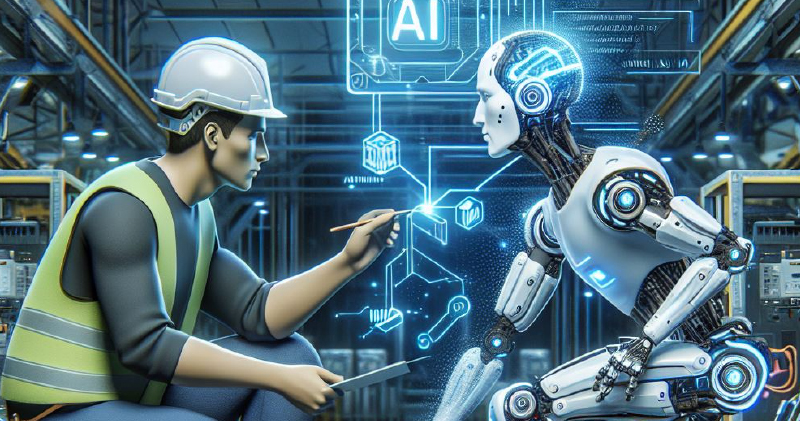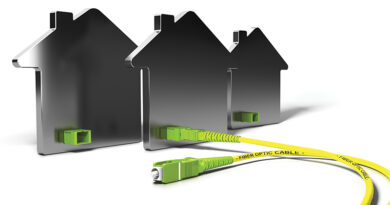AI in the DOCSIS Engineering Realm
Challenges, Opportunities, and the Future
In January of this year I attended a two-day training event on artificial intelligence (AI) and machine learning (ML). I was impressed by the number of tools and resources that were exhibited and had no doubt that the cable industry will certainly take advantage of such advanced technology, which is now present and growing in almost all industries. It is with no surprise that many cable operators are starting to incorporate AI in their equipment deployment, implementation, and troubleshooting.
What exactly is AI?
Artificial intelligence is a branch of computer science focused on building systems that can think and solve problems like humans. These systems analyze large amounts of data, learn from past experiences, and improve over time. Unlike legacy computer programs that require humans to fix issues and make improvements, AI can adapt and optimize processes independently. An interesting fact that many people may not know is that research on machine learning began as early as the early 1900s. Driven by the desire to simplify tasks and improve efficiency, humans started exploring ways to create computers that could think and learn like them.
Let’s explore the rise of AI in the technology landscape used by cable operators. I will focus on potential ways Cox might leverage it to enhance the field technician’s experience, while also highlighting the challenges and opportunities it presents for the teams implementing it.
What does AI have to do with the future of DOCSIS and the cable industry?
If you had the chance to attend the last SCTE TechExpo24 in Atlanta, GA, you saw firsthand the many presentations by industry experts with material highlighting how AI is implemented in many of their products and solutions exhibited at the convention.
In the general session at SCTE TechExpo24, SCTE CEO Maria Popo presented on a future of the cable industry incorporating AI and announced that SCTE has teamed up with CableLabs to provide AI certification for their members, helping them improve AI troubleshooting and diagnostic agents. This change is clearly on the horizon in our industry.
How AI is currently implemented at COX
Continuous IT automation enhancement
At Cox Communications, our commitment to information technology (IT) automation is an ongoing journey marked by continuous improvements. For instance, we have integrated generative AI into our chatbots, enhancing customer care, knowledge management, and content creation capabilities. Automation has also been implemented in our software development life cycle (SDLC) processes, continuous integration/continuous deployment (CI/CD) pipelines, and cloud systems, enabling on-demand compute and storage solutions. Currently, we are in the preliminary stages of adopting artificial intelligence for IT operations (AIOps) to predictively detect and restore services by analyzing learned patterns.
The cable industry is now generating network telemetry at volumes that far exceed the capacity of manual analysis. With streaming telemetry offering near real-time updates, smarter nodes and amplifiers thanks to DOCSIS 4.0, and constant improvements in CPE capabilities, the amount of information flowing through the system just keeps growing. It’s a lot to manage, but it’s also opening the door to smarter, more responsive networks. That’s where our AI implementation steps in, helping to make sense of all that data—eventually turning it into actionable insights, and offering recommendations to improve both how data is processed and the overall quality and reliability of the service delivered to customers.
Data as the foundation for AI and automation
Driving automation and AI forward starts with one critical element: strong, well-managed data. It’s the foundation that supports smarter, more efficient systems across our organization. While the potential benefits, especially for our DOCSIS platform and beyond, are significant, we also recognize the complexity that comes with this kind of transformation. That’s why we are approaching implementation with care, ensuring each step is thoughtful, measured, and aligned with our long-term goals.
Let’s take a practical approach to a real field scenario:
When relying on AI and ML in our ecosystem, our AI applications might detect a node that is in an unhealthy state. The systems advise the network operation center (NOC) that a technician needs to be dispatched to correct the issue. While on-site, the technician might utilize a live AI chat engine for real-time troubleshooting based on their input. Previously, troubleshooting was done from experience or cumbersome documentation. In addition, this procedure might have required an additional phone call to the NOC and a manual process to get the issue addressed. Our AI based approach could not only accelerate resolution time but also enhances customer reliability. This might also serve to educate the technician and walk them through practical hands-on troubleshooting.
These types of hypothetical scenarios are still in the development phase at Cox and being evaluated for their usefulness by our AI department and other boundary partners.
Data risks and implementation challenges
One common challenge many industries face while implementing AI in their ecosystem is the fear of data corruption. Misinformation delivered to a field technician, or a NOC team member can lead to incorrect diagnostics or configurations, potentially impacting network performance and customer satisfaction. That is why we are taking a very cautious approach while implementing AI with robust and secure ways to ensure its effectiveness.
For our DOCSIS engineers at Cox, the question becomes: How comfortable are we with relying on machine learning to configure and manage critical infrastructure that directly impacts the customer experience?
As we continue to discover AI capabilities, it will be crucial to find an effective balance between AI capabilities and human decision-making.
Let’s not panic, but embrace the change that is coming
For operators, AI can streamline network management, reduce mean time to repair (MTTR), and predict maintenance needs before issues arise. DOCSIS engineers can benefit from smarter diagnostics, automated troubleshooting, and more efficient bandwidth allocation. By using AI to handle repetitive tasks and analyze massive data streams, teams can focus more on innovation and less on firefighting, ultimately delivering a better customer experience.
Conclusion
Cox Communications is committed to creating meaningful moments of human connection through technology. As many companies and industries are embracing AI technology, Cox has begun to incorporate AI strategies in its ecosystem for a brighter future.
Cox’s leadership and engineering teams are fully aware of the challenges that come with adopting new technology; that is why we are focused on making sure that any data and processes we bring into our platform are handled carefully and accurately.
As we navigate this rapidly evolving landscape, our commitment remains clear: to embrace innovation thoughtfully, ensuring our technology serves our people, our partners, and the future we’re building together.
References:
https://www.tableau.com/data-insights/ai/history#definition
https://www.coxenterprises.com/
 Regis Tiebi,
Regis Tiebi,
Network Cloud Engineer,
Cox Communications, Inc.
Regis Tiebi is a Network Cloud Engineer at Cox, where he is responsible for testing and developing deployment guidelines for DOCSIS 3.1/4.0 technology with a focus on vCMTS. He is relatively new to the cable telecommunications industry, with just over one year of experience at Cox. Before joining the Cox Communications Access Design team, Regis worked as a Senior Network Engineer across several industries, where he deployed Cisco and wireless LAN solutions and implemented network data centers on-prem and in the cloud.
—
Image provided by author — created by a third party AI image generator




